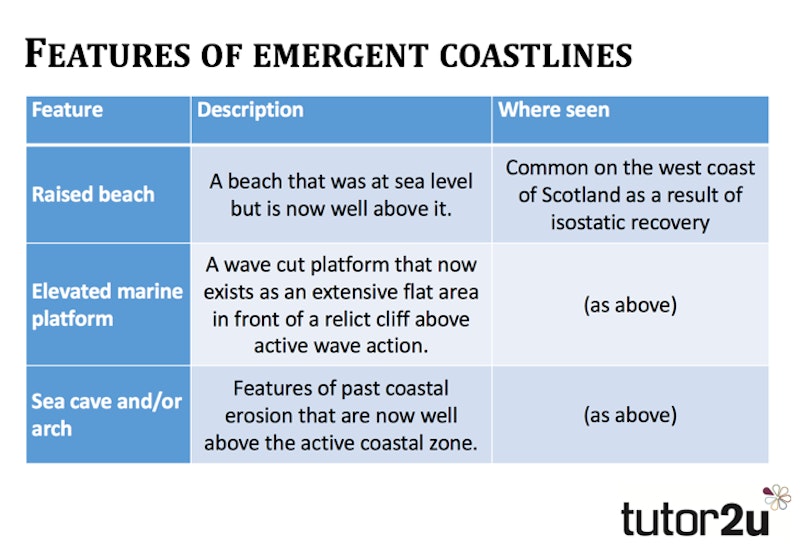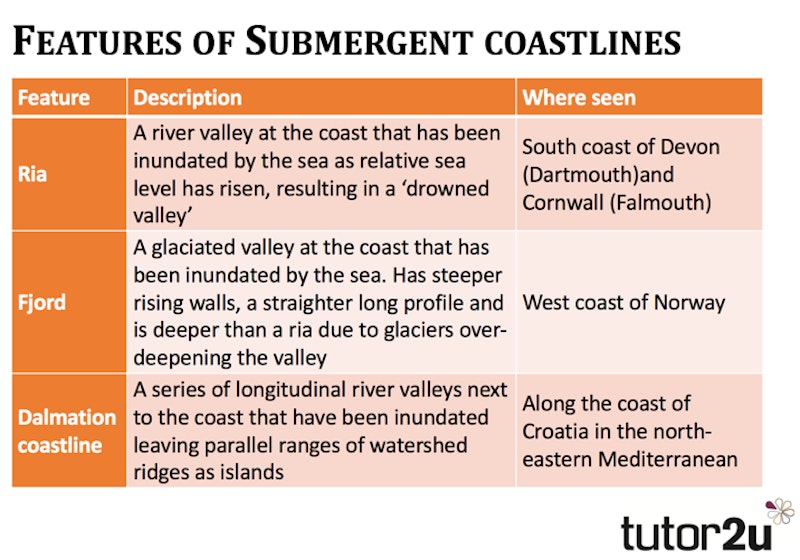Study Notes
Coastal Landscape Development - Features of Emergent & Submergent Coastlines
- Level:
- AS, A-Level
- Board:
- AQA, Edexcel, OCR, IB, Eduqas, WJEC
Last updated 22 Mar 2021
The key features of emergent and submergent coastlines are summarised below.


Human uses of these features:
- Rias and fjords often offer sheltered estuaries of relatively deep water in which ships, fishing vessels and pleasure-craft may find safe harbour.
- Evidence of past relative sea level changes so that current rates of change may be understood and measured
Coastal management issues
- Relatively rapid short-term rises in sea level as a result of thermal expansion and ice-sheet melt are likely to cause more frequent flooding of low-lying coastal areas. Future coastal planning has to consider the impacts this may have and whether adaptation policies are required.
- As different coastlines may be affected by relative eustatic sea level rise at different rates according to their isostatic context, coastal management policies need to assess the rate of likely future rise on a coastal region-by-region basis. Around the coasts of member countries of the EU relative sea level rise takes place at different rates so policy is geared to identifying coastlines in greatest need of protection and prioritising action for those areas.
You might also like
Coastal Systems & Landscapes - A-Level MCQ Quiz
Quizzes & Activities
Coastal Systems and Landscapes - Introduction
Study Notes
Coastal Features and Coastal Landscapes
Study Notes
Daily Email Updates
Subscribe to our daily digest and get the day’s content delivered fresh to your inbox every morning at 7am.
Signup for emails